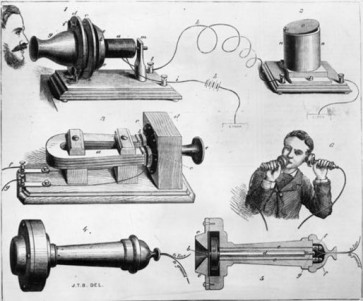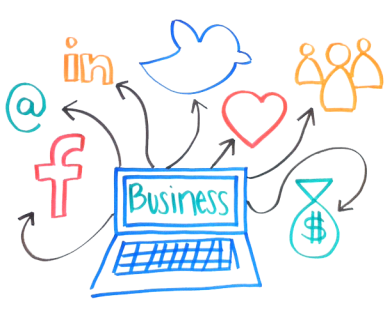
Long distance interaction with friends and family has been a concern for humans for centuries. We rely on communication to strengthen our bonds and when face to face interactions became a medium that was not always possible, we began to explore other ways in which we could interact. Now, we are surrounded with many web-based platforms which, through globalization have enabled people from different geographic regions to socially interact with one another online as well as share information with each other.
Social media existed long before what we now know, with the earliest methods of communicating across long distances dating back to 550 B.C., which consisted of hand written letters which were delivered from one person to another.

The telephone and radio would come as the next major step forward as humans became more creative with the ways in which we now communicate. Both technologies are still used today although their use has become much more modern as these signals are now able to transmit over longer distances and communication has become more instantaneous.
In 1997, a social networking website called http://www.SixDegrees.com was established with the hope of connecting people together through the internet. This website failed to gain traction in the early 2000’s because people still had a long way to go before getting used to the idea of publicly sharing their information with the entire world and as such, it was shut down in 2000; but it gave birth to the many ideas we now view as part of our everyday social networking habits. In our present day, social media has evolved to not only allow us to communicate using text-based methods, but also provides the use of audio, video and images.
Types of Social Media Used Today
Social media exists in different other forms and it is important to understand there are quite literally tens and hundreds of different platforms out there that exist other than Facebook or Twitter. These other non mainstream platforms exist for different use cases, some are more suited for business needs than others while others fall into more than one category. Wikipedia has a growing list of the social media websites that are used today and each one focuses on one or more categories. Blogs, wikis and social networking sites are the most common type of social media used today, they are also known as “the big three” as a result of this.
Business & Social Media

Everyone uses social media in different ways, and it is important that it is used according to what your goals are. Businesses often use social media to connect with their user base on a more personal level such as sharing insights into their day to day activities which ends up enriching the relationship between the consumer and the business. Aside from this, social media is such a powerful tool for businesses as they can also use it to increase brand awareness, find out what other competitors are doing as well as selling their products online, all of which is something that cannot be achieved with traditional marketing and advertising.
The Socio-Technical Theory
In the 1960’s while working as consultants at the Tavistock Institute in London , Eric Trist and Fred Emery coined the term social-technical system which describes the approach used to harness the people aspects as well as the technical aspects of organizational structure and processes to achieve joint optimization. This allows the emphasis to be focused on achieving excellence in both the technical performance as well as quality performance in people’s work.
In socio-technical systems, interdependencies exist between humans and technologies. Each one relies on the other in what is a complex symbiotic relationship.
Any communication system that involves the mediation of a computer can be classed as socio-technical due to their ability to bring people together and allowing them to capture knowledge, manage it and use it for decision making. For example, collaborative desktop applications involve human design features that support human coordination and brainstorming and these systems are designed based on the needs of the organization as well as its users. Social networking sites such as blogs, wikis are another example of a socio-technical system which enable rich connectivity and sharing with others.
Helpful Articles
Web 2.0 and Social Media (eBook)